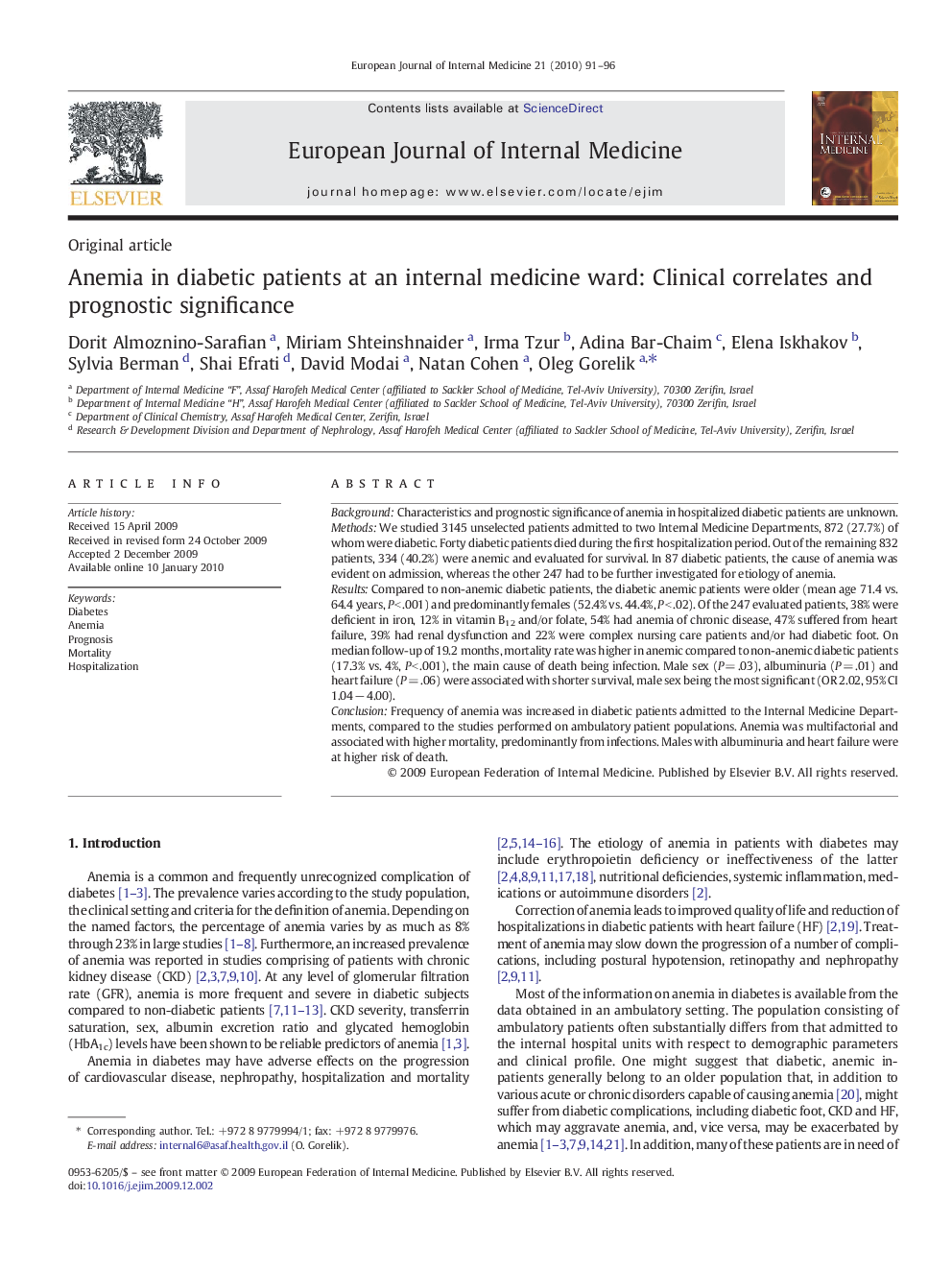| Article ID | Journal | Published Year | Pages | File Type |
|---|---|---|---|---|
| 3467274 | European Journal of Internal Medicine | 2010 | 6 Pages |
BackgroundCharacteristics and prognostic significance of anemia in hospitalized diabetic patients are unknown.MethodsWe studied 3145 unselected patients admitted to two Internal Medicine Departments, 872 (27.7%) of whom were diabetic. Forty diabetic patients died during the first hospitalization period. Out of the remaining 832 patients, 334 (40.2%) were anemic and evaluated for survival. In 87 diabetic patients, the cause of anemia was evident on admission, whereas the other 247 had to be further investigated for etiology of anemia.ResultsCompared to non-anemic diabetic patients, the diabetic anemic patients were older (mean age 71.4 vs. 64.4 years, P < .001) and predominantly females (52.4% vs. 44.4%, P < .02). Of the 247 evaluated patients, 38% were deficient in iron, 12% in vitamin B12 and/or folate, 54% had anemia of chronic disease, 47% suffered from heart failure, 39% had renal dysfunction and 22% were complex nursing care patients and/or had diabetic foot. On median follow-up of 19.2 months, mortality rate was higher in anemic compared to non-anemic diabetic patients (17.3% vs. 4%, P < .001), the main cause of death being infection. Male sex (P = .03), albuminuria (P = .01) and heart failure (P = .06) were associated with shorter survival, male sex being the most significant (OR 2.02, 95% CI 1.04 − 4.00).ConclusionFrequency of anemia was increased in diabetic patients admitted to the Internal Medicine Departments, compared to the studies performed on ambulatory patient populations. Anemia was multifactorial and associated with higher mortality, predominantly from infections. Males with albuminuria and heart failure were at higher risk of death.
